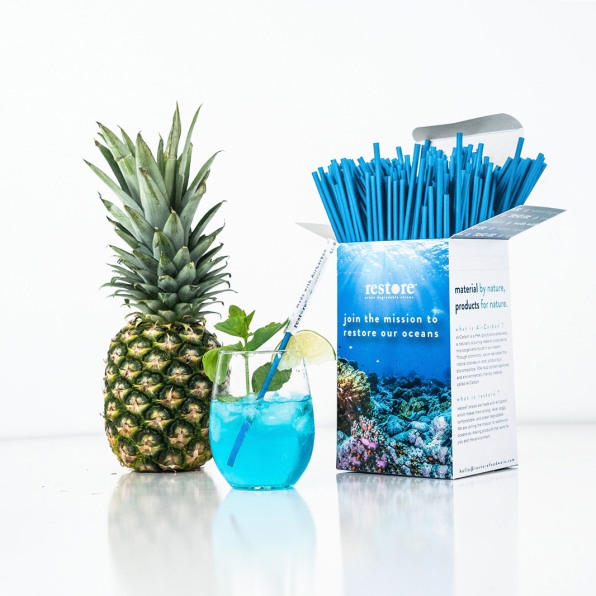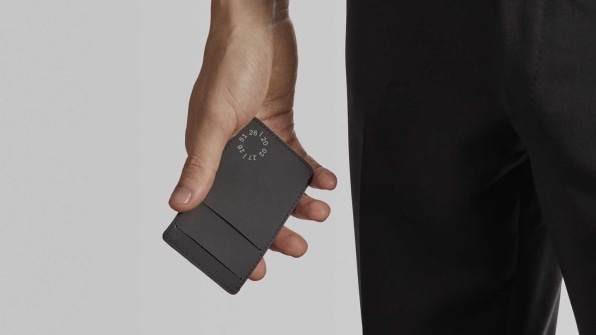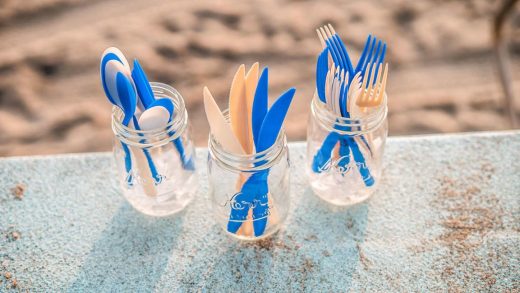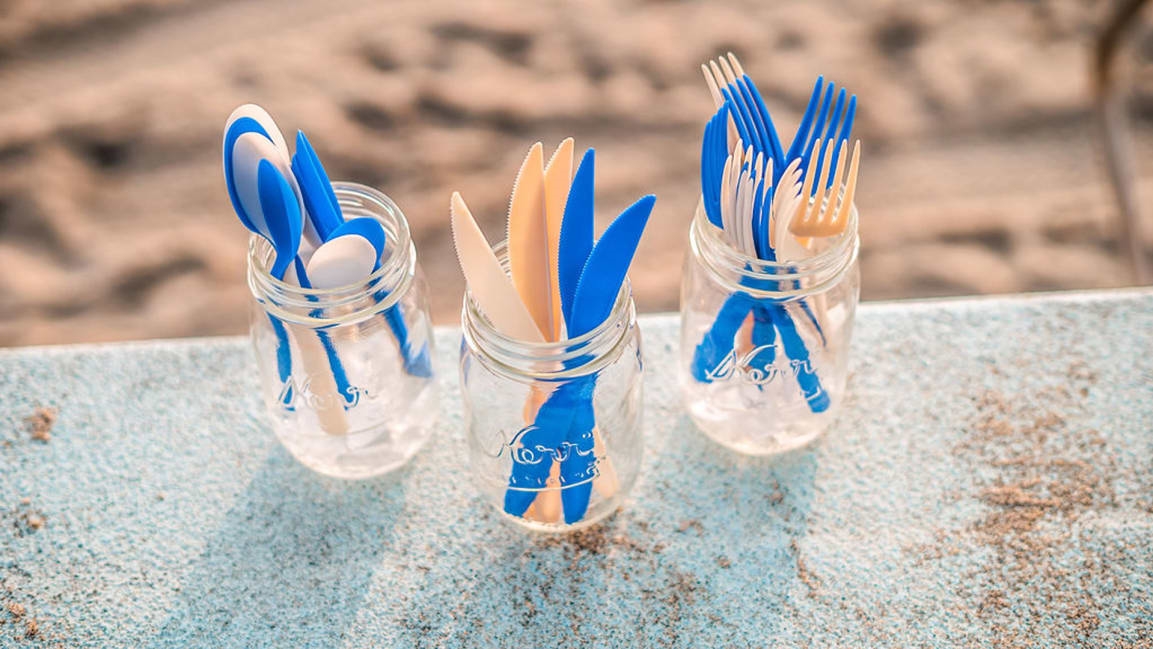These carbon-negative, ocean-degradable straws and forks are made from greenhouse gases
At a new production facility in Huntington Beach, California, a 50-foot-tall stainless steel tank is filled with 15,000 gallons of salt water, and inside microbes are turning methane—a potent greenhouse gas—into a new material that could simultaneously help tackle the challenges of climate change and ocean plastic. If the material is made into a disposable fork and ends up in the ocean, it degrades as easily as cellulose, turning into a food source for microbes.
Newlight, the biotech company that created the material, began looking for ways to make use of greenhouse gas emissions more than a decade ago. “We asked the question, how can we take carbon that would otherwise go into the air, and turn it into useful materials,” says Mark Herrema, CEO of Newlight. “As we looked around nature, we discovered pretty quickly that nature uses greenhouse gas to make materials every day.”

The researchers were particularly interested in ocean microorganisms that can consume methane and CO2 as food. “After they eat that gas, they then convert that into a really special material inside themselves,” he says. “It’s a meltable energy storage material, which you can purify and then form into various parts and shapes and pieces.” The team decided to replicate the process on land, using a tank filled with saltwater and microbes, with air and methane added to start the process. (The methane comes from an abandoned coal mine and other sources, where it would otherwise be emitted to the atmosphere.) When the microbes make the material—which Newlight calls Air Carbon—the company extracts those cells. Then it filters and purifies the material, drying it into a fine white powder that can be molded into objects. After years of development, the first offerings made from the material are coming to market.

The company has experimented with turning the material into everything from furniture to packaging but decided to focus first on products where it could have the most impact—including as a replacement for single-use plastic straws and cutlery. “Because it’s a material that’s grown by life and recognized by life, it’s ocean degradable,” says Herrema. “And if you look at ocean plastic pollution, a very large percentage of what ends up in the ocean comes from foodware and food-related applications.” Restore, the company’s new foodware brand, makes carbon-negative straws that look and feel like plastic. Unlike paper straws, they don’t get soggy. But like paper, the material will naturally break down over time if it happens to be littered in the ocean. The brand also makes single-use forks, spoons, and other items that are typically made from plastic.

To tackle another problem, Newlight is launching a separate brand called Covalent, which is making wallets and handbags from its material instead of leather. “I believe it’s the world’s first net carbon-negative leather,” Herrema says. The material is durable—it won’t peel or crack like real leather—and unlike synthetic leathers made from fossil fuels, it can easily be recycled. The brand is also using Air Carbon to make carbon-negative eyeglass frames. The products, available for preorder now, will come stamped with a “carbon date” that consumers can plug into a website to track how the carbon in that item moved through the production process.
“You see at the end of that, the fact that you prevented, let’s call it, 100 grams of carbon dioxide equivalent gas from going into the air,” Herrema says. “I think that that tangible factor has the potential to get people excited about this. And also start asking questions about other materials in the industry.”
(51)



